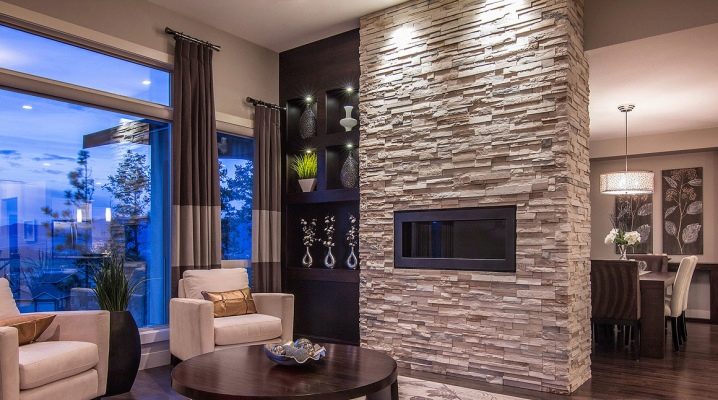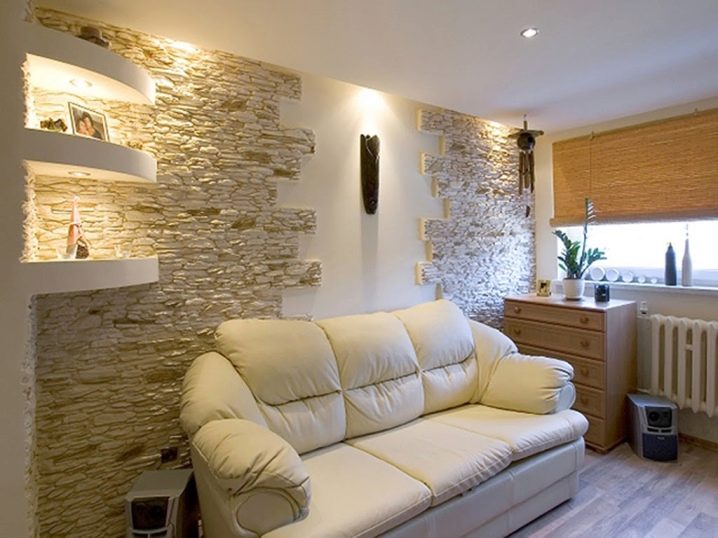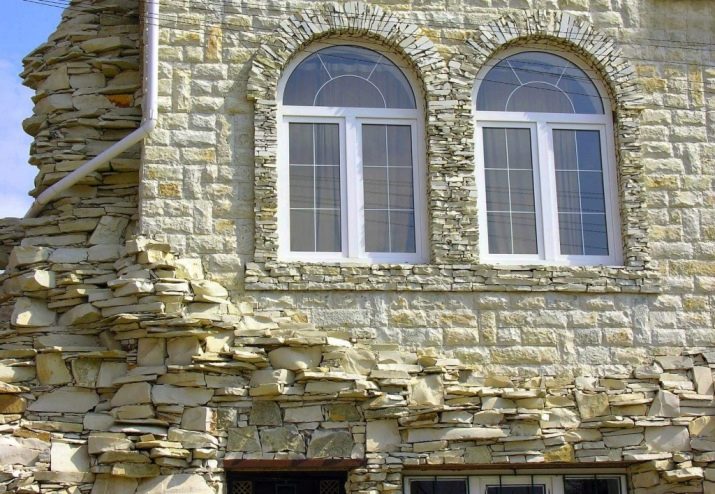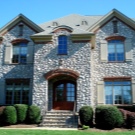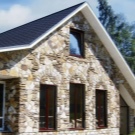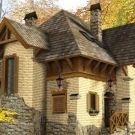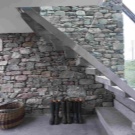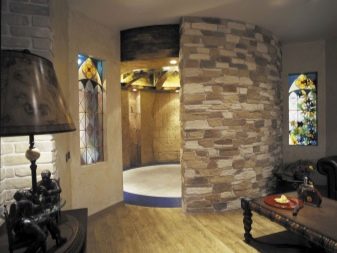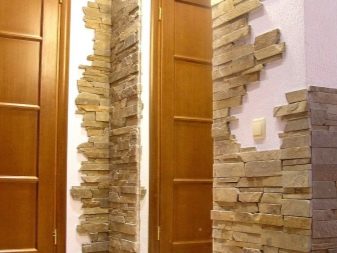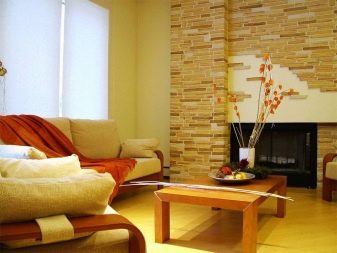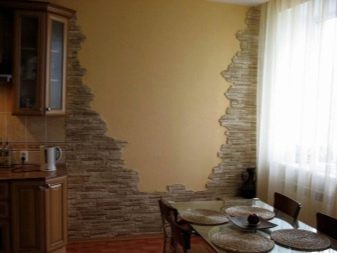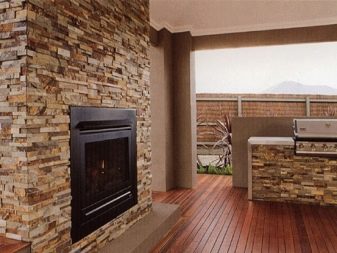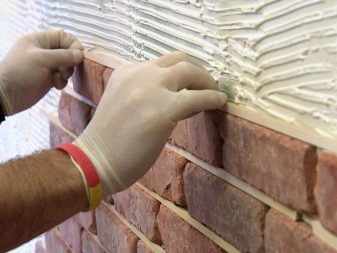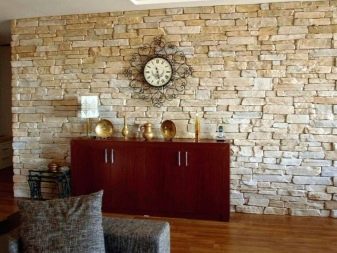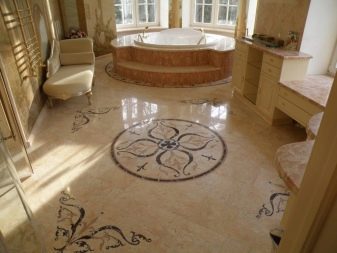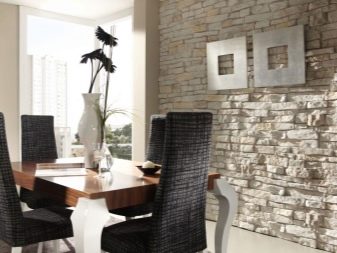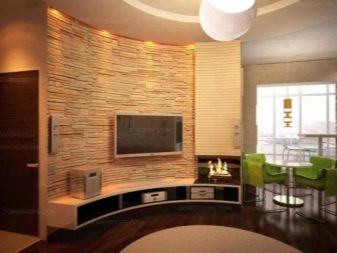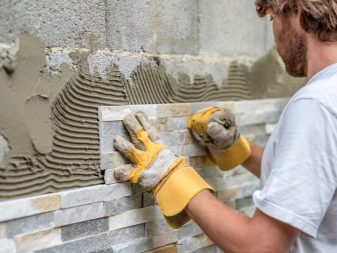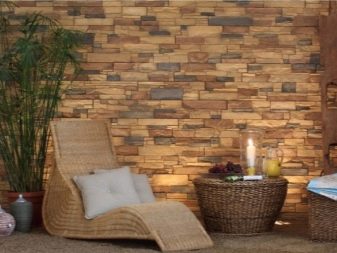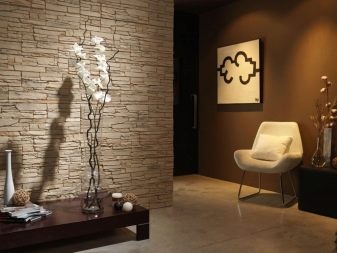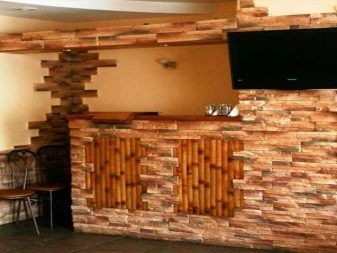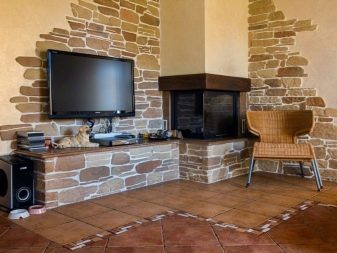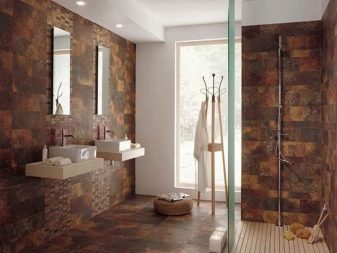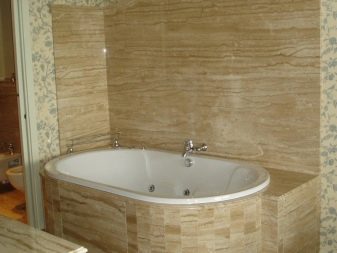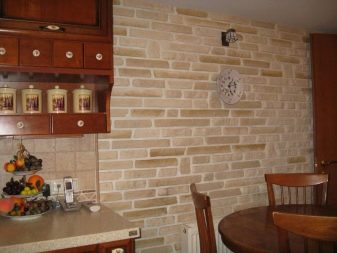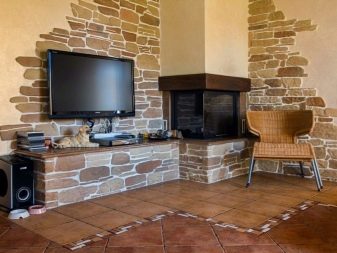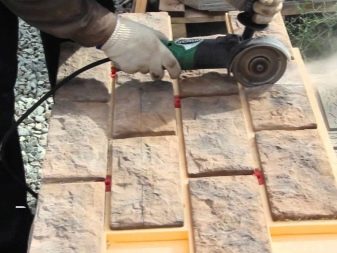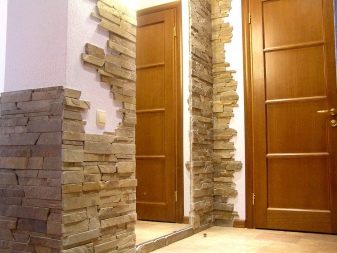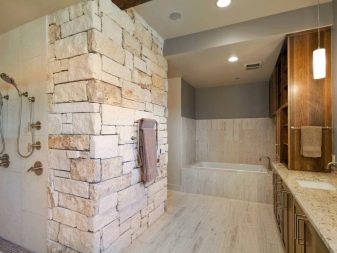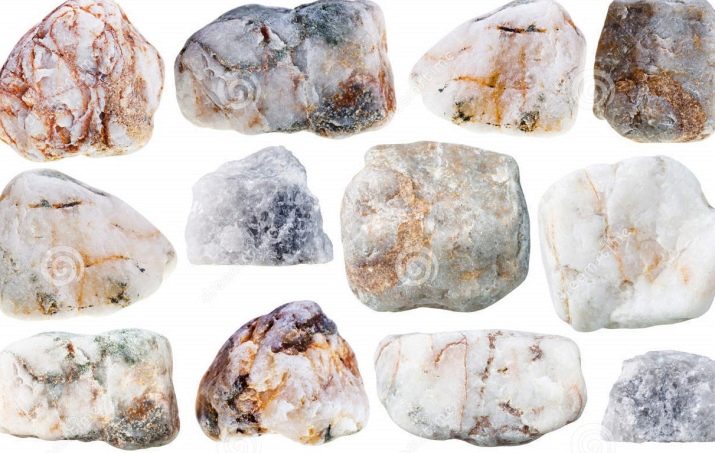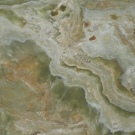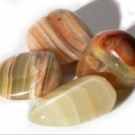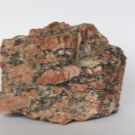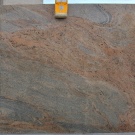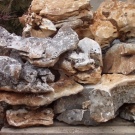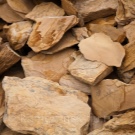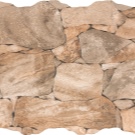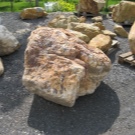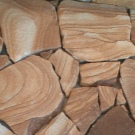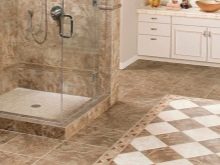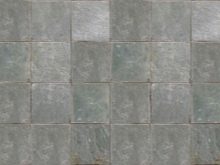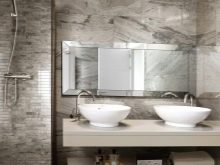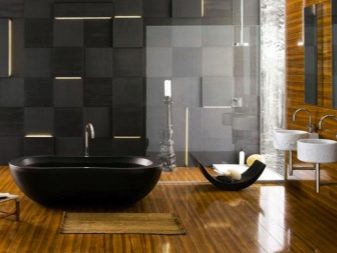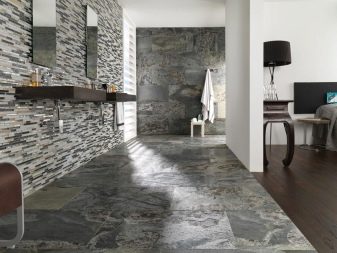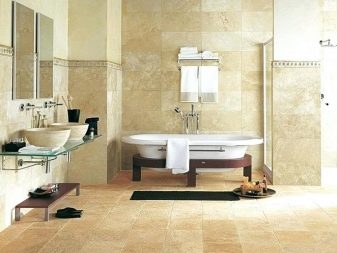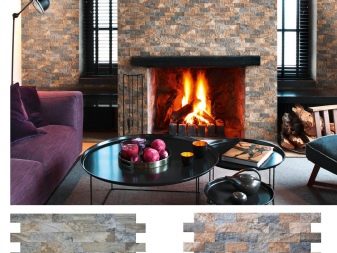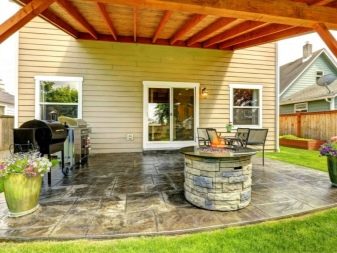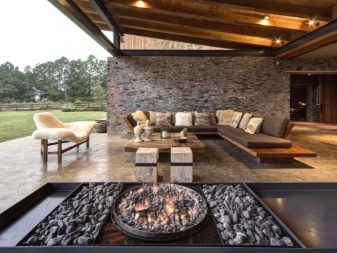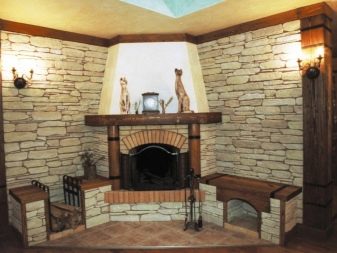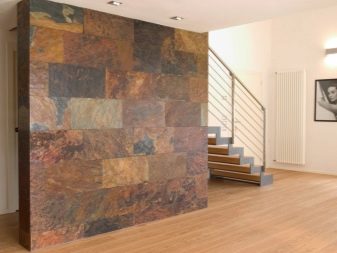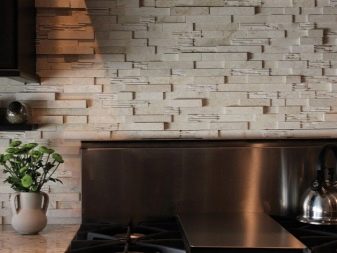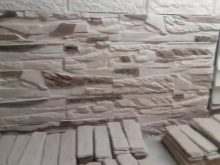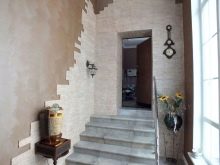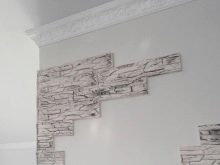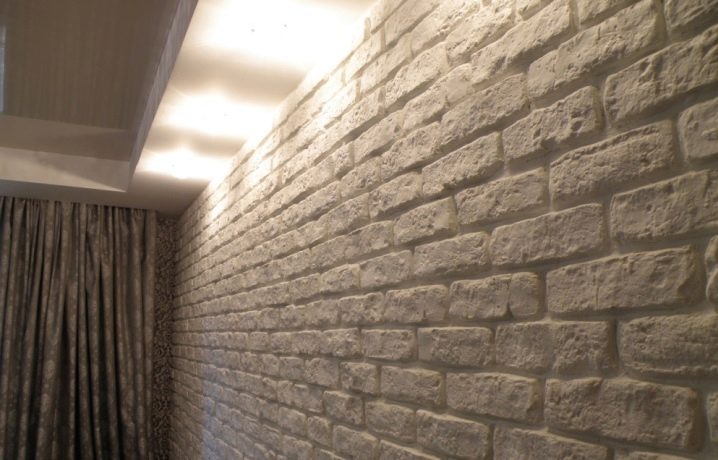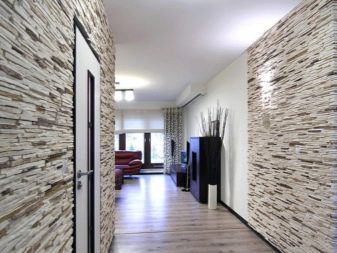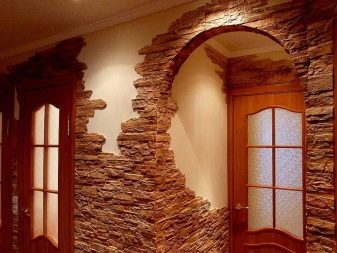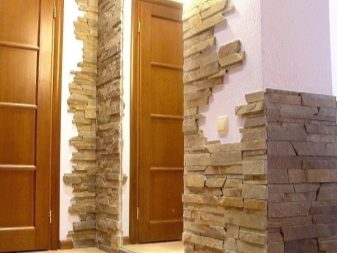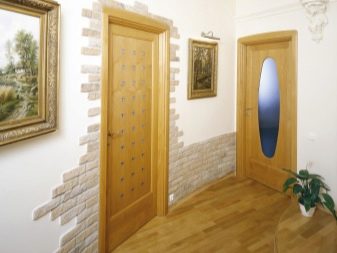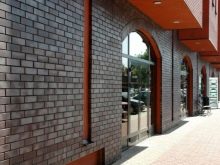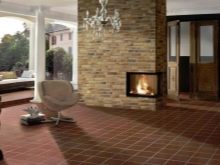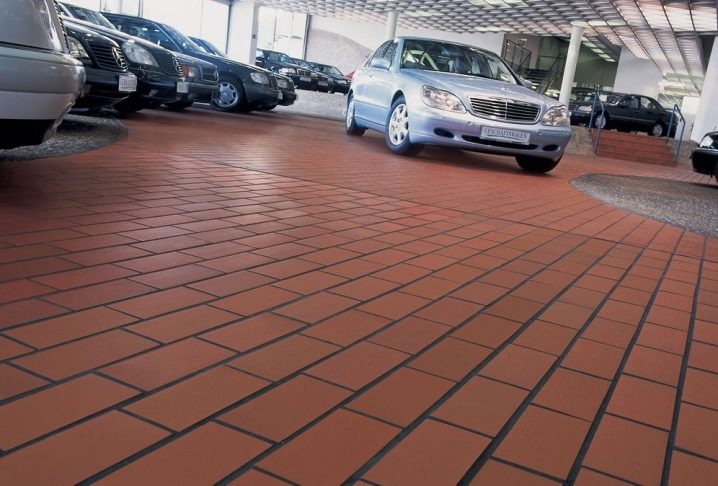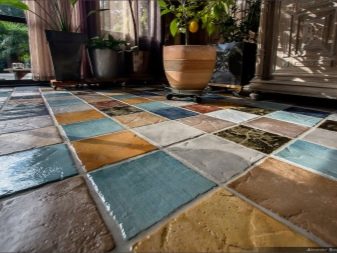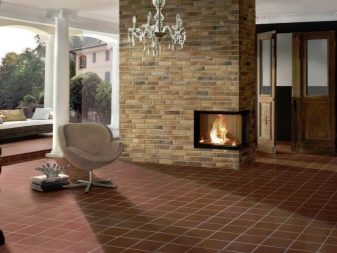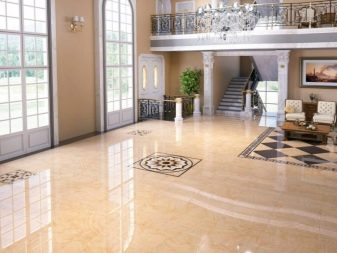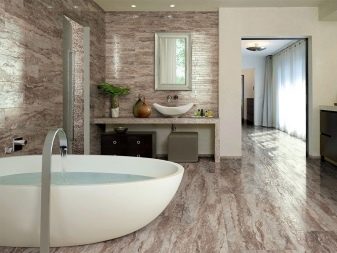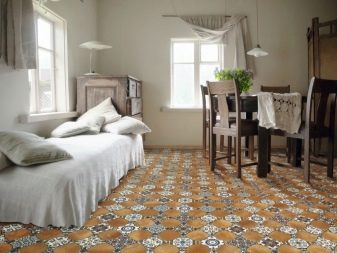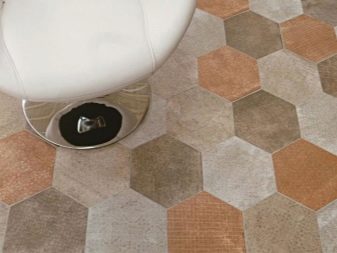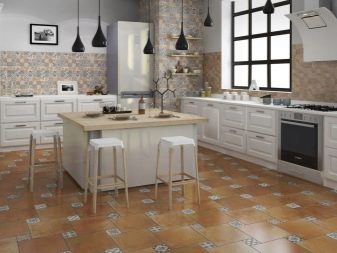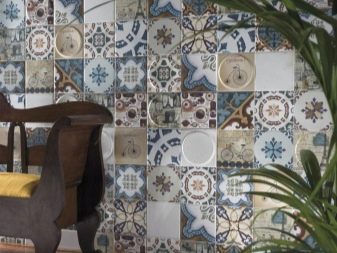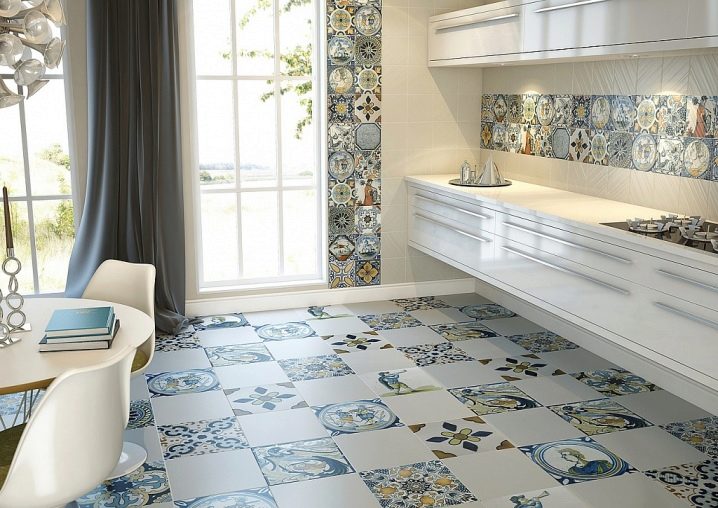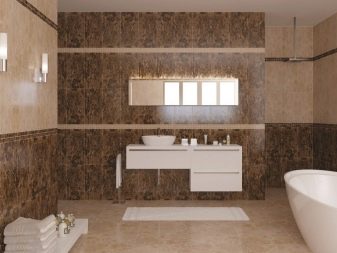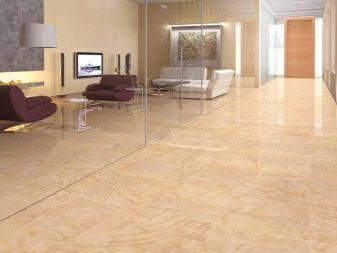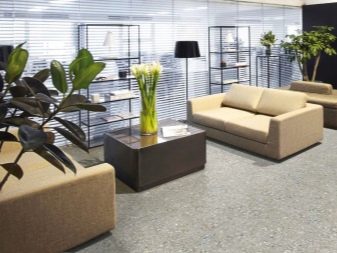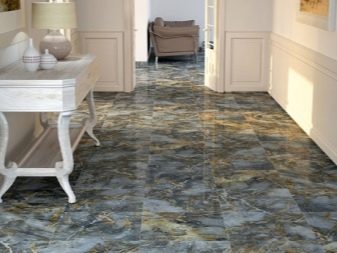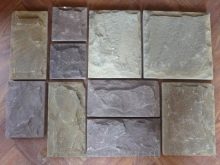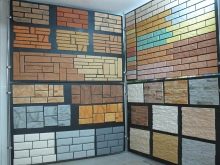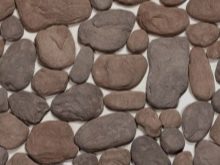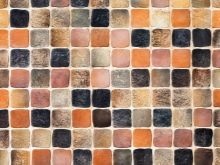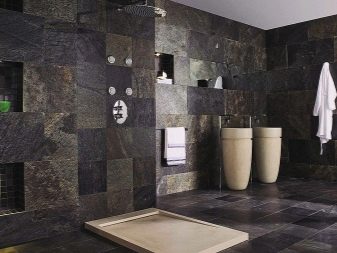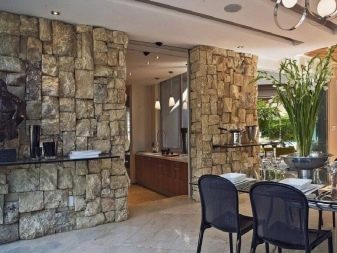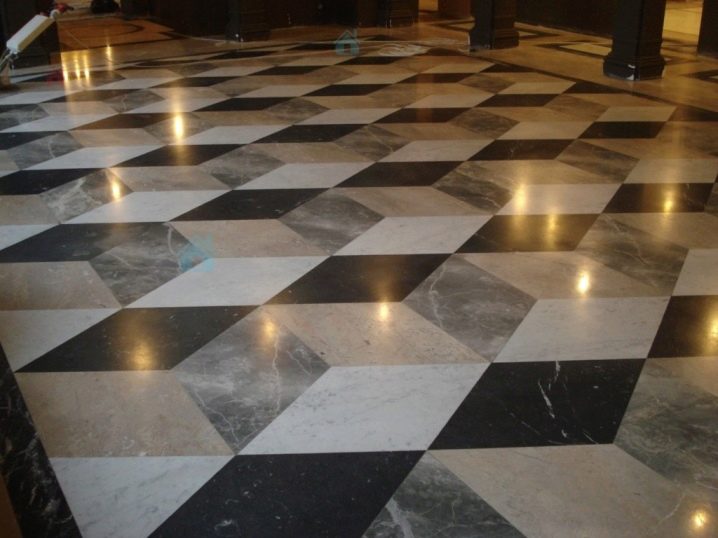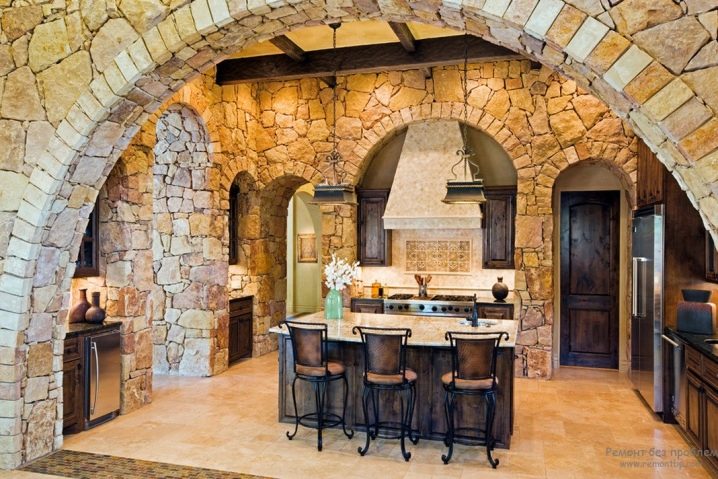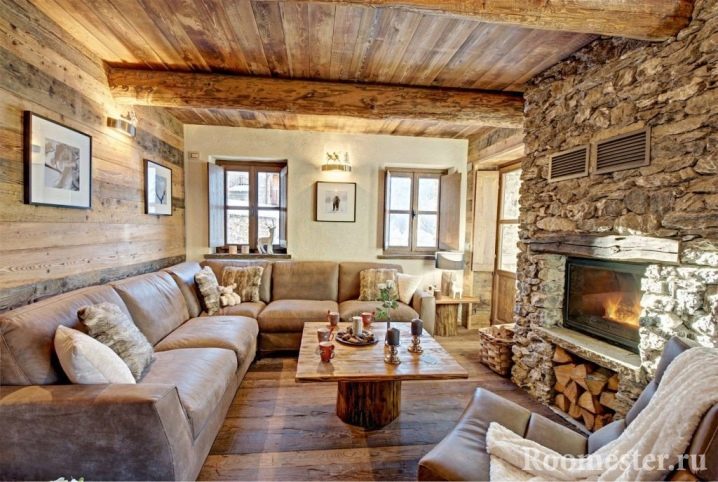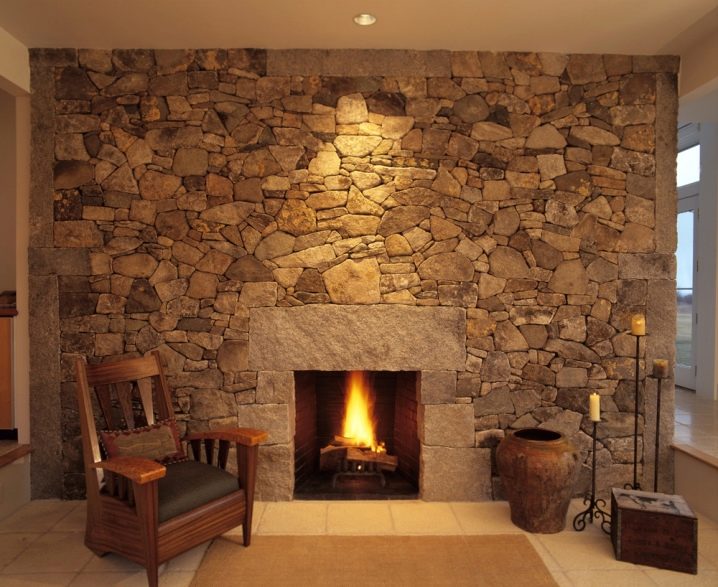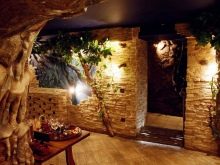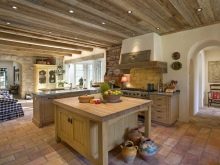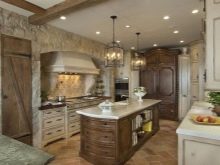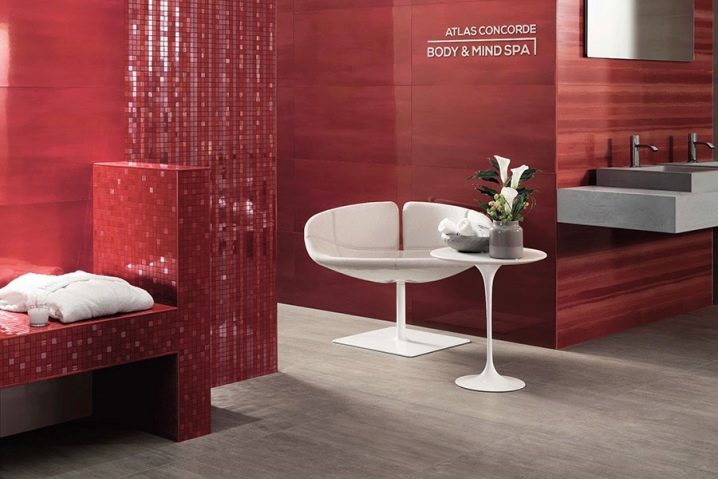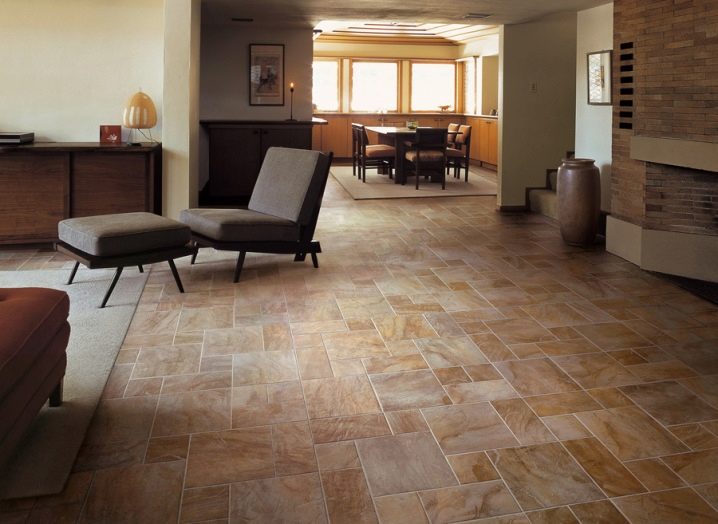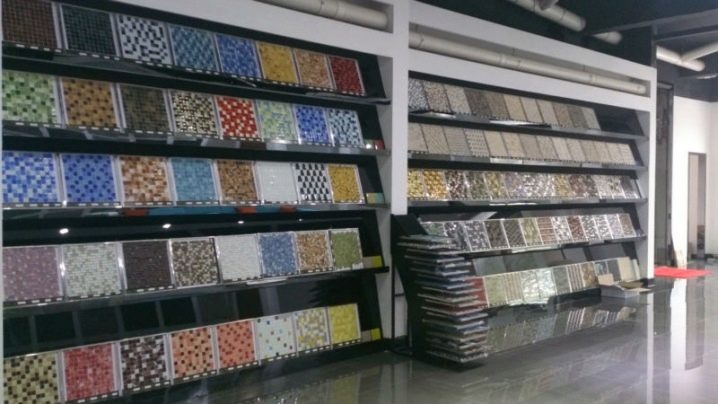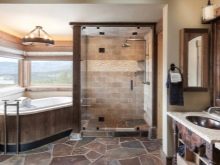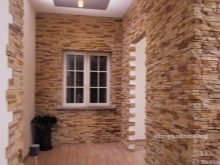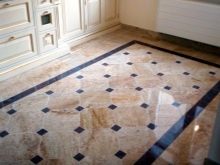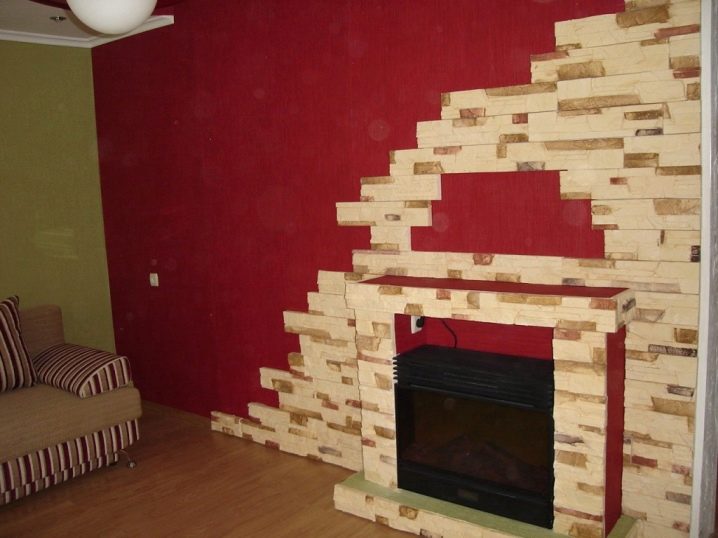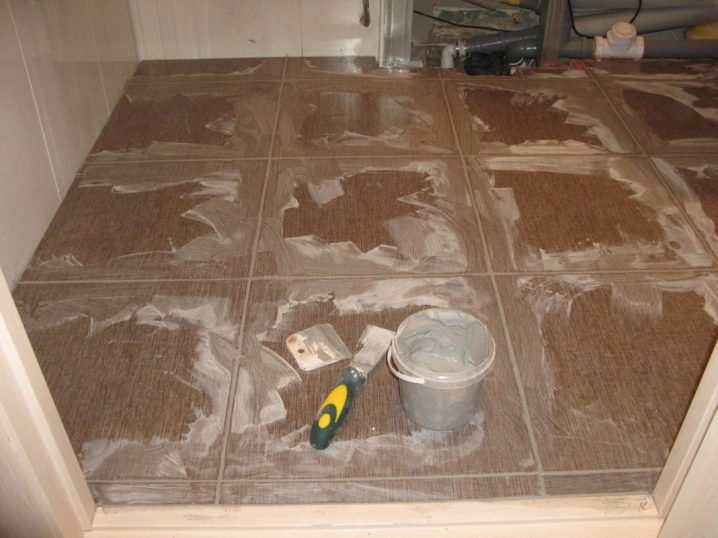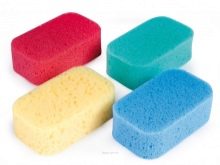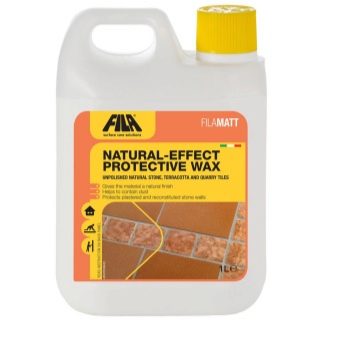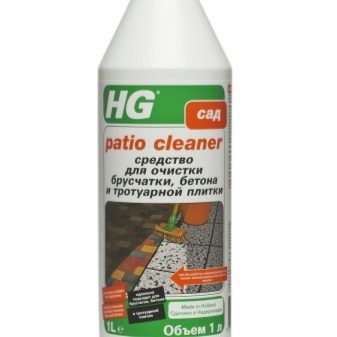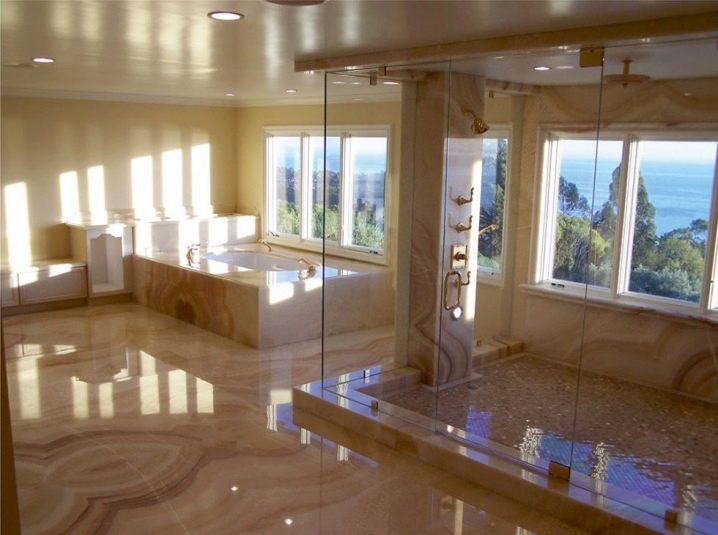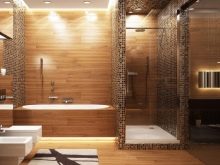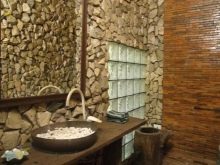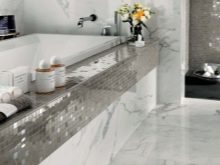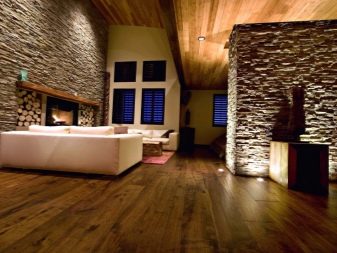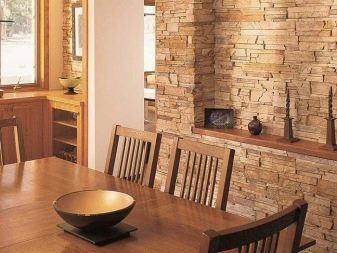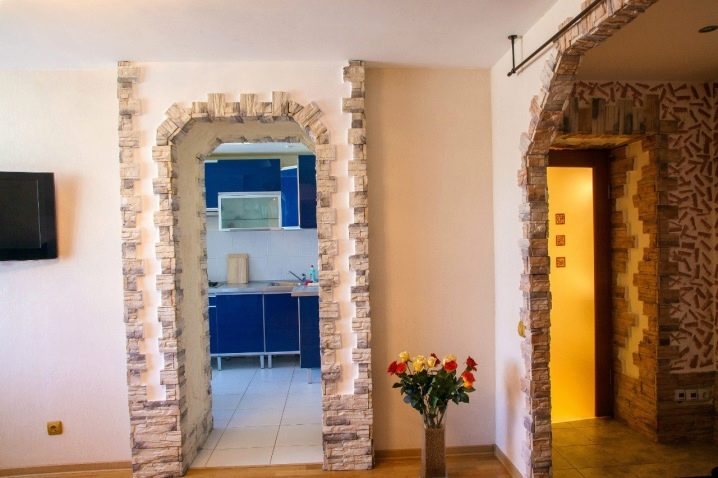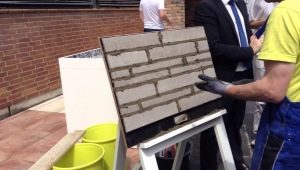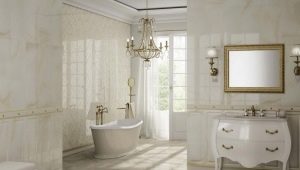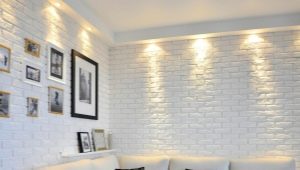Tile under the stone: the subtleties of home and apartment design
The tile is a popular facing material which is used both for internal, and for exterior finish. Since wall and floor tiles for stone are represented in a variety of composition and design solutions, the choice is significantly difficult. Therefore, to create a harmonious interior, you should explore all the features of different tile coatings under the stone.
Special features
Decorative tiles under the stone is now one of the most popular finishing materials. In addition, recently, according to designers, this material is relevant in the interior for interior decoration. The stone is considered a trend of the previous and new seasons. It looks elegant and beautiful, but at the same time it has high functionality and reliability.
This material is of natural origin.so it always looks natural and natural.In addition, natural stone is durable.
Natural materials are always expensive, so not everyone can afford such a finish. Stone is a heavy raw material, which is why it is not always suitable for interior decoration. As a rule, with the help of natural stone they trim the facades of houses and structures, where it looks beautiful, perfectly fulfilling its role and functions, including protective and decorative ones.
But in the interior of the house or apartment for decoration using decorative artificial stone. This is due to the fact that it is much cheaper than the natural counterpart, is easier. This is what makes it different from natural stone.
- Tiles under stone can look exactly the same as natural material, and not only externally, but also to the touch. Manufacturers present models with realistic relief and texture. Some models look so natural that even a professional can not distinguish them from their natural counterpart.
- In addition, the production uses new technologies that make this material no less reliable than natural stone.
- Not everyone will be able to cope with the installation of natural stone, but the tile under this material is quite simple to install, because for its installation does not require special skills and special knowledge.
- Stone tile is based on high-quality and natural compounds, so it looks quite natural. Imitation stone can transform any interior. She can be his highlight. Outwardly, such a tile can look like a granite cut into layers, it can be decorated in marble or malachite, as well as in any, even the most ordinary stone. Moreover, the stone patterns and texture are believable and unique. The stone looks luxurious and elegant.
- This tile is quite simple to install, in the process of cutting it almost does not split, while maintaining its presentable appearance. Tiles under the stone trim both walls and floors, as well as used as decorative elements of various interior items. As a rule, the floor is tiled under the stone of porcelain stoneware, since it is of the highest quality and most reliable.
- In addition, this tile is able to carry any, even strong shock loads.That is why in this way often trim the space in the hallway.
- It is easy to care for because it has a very low level of moisture absorption. You can carry out wet cleaning if necessary.
- The tile under a stone is considered qualitative and quite practical. You can lay it in any room. Thus, it can be called universal. Stone models look very interesting and can bewitch with their design. You can pick up almost any shade, texture and texture.
- Manufacturers are models for every taste and wallet. Besides, the tile under a stone is not less eco-friendly and safe, than natural analog. It does not contain harmful components, in addition, it does not emit toxic substances and aldehydes. The tile under a stone, as well as many types of this finishing material, meets the requirements of safety and has a low electrical conductivity.
- Many stone models are resistant to sunlight, so they do not fade at all. The tile retains its original appearance for decades, especially for high-quality models.
- This tile is resistant to high humidity. Since the material is well tolerated by the effects of water, bathrooms, saunas and swimming pools are also trimmed with stone tiles.
- The texture of the stone is quite practical: dust, dirt and minor scratches are imperceptible on it. That is why such options are often used for decoration of rooms with high traffic.
- It is quite easy to care for stone tiles: due to the origin of this material it is resistant to chemicals, it can be washed using special means.
- Ceramic tile weighs very little, so it is often mounted on walls. In addition, it is this type of tile that is excellent for fragmentary accent wall decoration. With its help often revetted parts of the walls, window, doorways and some other elements. This leads to the fact that you can pick up models of even the smallest sizes, and all of them will look very natural.
But tile under the stone has some drawbacks:
- Although in general many types of this finishing material are easy to cut, however, smooth models are much easier to process than embossed stone products. This will take much more time than cutting ordinary tiles without relief.In order to beautifully and precisely cut the tile under the stone, you will need to purchase specially designed tools.
- Another disadvantage is that it is difficult to dock with other decorative surfaces, since it is rather thick and embossed. Therefore, you need to pick up and other coarse and thick materials. In addition, a wall with such a tile will have wide tile joints and a rough texture, so it will not look good with all other coatings.
- Tile under the stone is a cold material, so with its help infrequently trim rooms for residential purposes. That is why it is purchased mainly for finishing the kitchen, hallway, bathroom. In the bedroom and nursery such a design is not accepted. In such intimate rooms the natural stone will look inappropriate. In the interior of living rooms, natural stone can only be used in combination with heated floors.
- Some also note the difficulty of caring for surfaces with shallow relief: it is filled with dirt and dust, which obscure the tile. That is why you have to frequently wash and clean it so that the coating always remains presentable.
Kinds
Stone tile flooring is distinguished by a variety of types.
Tiles made of natural stone
This is the only natural version of the coating of stone. It is durable and of high quality. It is the most durable and resistant to external influences material. The stone is dense and solid, it carries all mechanical effects. Manufacturers are both glossy and matte embossed models that have passed several levels of processing.
Stone tile can have not only a pronounced relief, but also a smooth surface. It is also coated with glaze or varnish. These models are quite expensive, mainly used for the decoration of luxurious interiors. Among all models, the most popular stone tiles made of marble, onyx, granite, balzat and other rocks.
All other models of stone tiles are decorative and are not natural. They only imitate this material, so they differ in a number of properties and qualities. But the manufacturer includes chips of natural stone in the composition of these finishing materials, which makes them as close as possible in terms of external and quality characteristics to a natural counterpart.
Ceramic tiles under the stone
This is the most common type of decorative coating. With it, trim almost all types of premises. Ceramic tiles with such a design has a good ratio of price and quality. Its performance characteristics are quite high, the coating can serve for more than 50 years.
Tiled models of stone differ in a huge variety of colors, drawings that are able to display even the smallest relief elements, transitions, as well as stone veinlets. They can imitate cracks and irregularities, pores of rocks. Ceramic tiles are capable of transmitting transitions of different shades, which is typical of this natural material.
She brings comfort to the interior and fills it with freedom. But with its help, you can make a fairly strict and restrained finish or, on the contrary, make a more romantic interior by doing an accent wall decoration. Ceramics can also be represented in brighter and more variegated shades, it is often used to hide some surface irregularities and other visual imperfections of the room.Many decorative models under the stone are able to focus on the merits of the interior, as well as hide all its defects.
She is not susceptible to temperature extremes. Even if it will be affected by frost, it is not deformed. That is why it is used even in rooms that are not heated. Even outdoor gazebos and walkways are finished with such stone tiles.
This type of tile is easily combined with other materials. This is an especially important quality if you combine the coatings.
It is used for both full and accent finishes. It is quite light, but durable. In its manufacture using a mixture of quartz sand and clay, as well as some other elements necessary for its coloring and increase the level of wear resistance. This material is made by molding under the influence of high temperatures.
Decorative tile under the stone can even be smooth: in this case it is covered with glaze, and the natural pattern remains the same, but the coatings do not have a relief texture. Also in the production of its left and rough, then the texture of the coating will be tactile qualities similar to natural stone.
Gypsum Decorative Tiles
Such models of stone have a completely different origin.They are made from a mixture of gypsum and polymers, being not so dense and reliable. The coating is unstable to the effects of high and low temperatures, so it is used only for finishing heated rooms. But stone models are quite lightweight and therefore easy to install.
The gypsum that forms the basis of this coating is completely natural and environmentally friendly.therefore, it is completely harmless to human health. With all the simplicity of its composition, gypsum interior tiles provide good thermal and sound insulation, it is flexible and ductile.
Of all types of decorative stone tiles, gypsum models are the thinnest, this wall tile is suitable for even the smallest of premises: it will not hide extra centimeters. Small thickness is a huge plus, because it simplifies the docking of this material with other coatings.
Gypsum can affect the humidity in a room. Thus, it can release moisture if the air is too dry or, on the contrary, to absorb it, if the air is very humid. This is an excellent regulator that is suitable for living spaces.Models for gypsum are easy to process, but still they are very fragile. That is why in the process of installation must be very careful.
The material is ductile and soft, it differs in friability from other types of stone coatings. It is mainly used only for wall decoration, since it is not sufficiently resistant for floor covering. This tile is easily damaged by mechanical stress, which is its disadvantage.
Experts advise you to use gypsum decorative stone models mainly for accent finishing in rooms with low loads and good microclimate. That is why it often revets the walls in the corridors, halls and some elements of the walls of living rooms. Decorative models of gypsum under a stone can be varnished, since the coating is excessively embossed.
Gypsum models are often used for cladding doorways, arches, offices. In some cases, using tiles trim decorative fireplaces, since such facing looks no less advantageous. Many designers note that it is gypsum that is best able to transfer the texture of a natural stone,therefore, this tile looks the most realistic.
Clinker
This type of tile is a small brick under the fireplace. This material is usually used not only for interior, but also for exterior decoration. It is great for cladding facades of buildings. In addition, because of its high stability and reliability, they are often trimmed in bathrooms, swimming pools, saunas, and even baths. In addition, clinker is often used for finishing real home fireplaces.
Clinker stone models are ideal for both wall cladding and floor finishing. The clinker is even placed in rooms where large loads fall on the floor.
Porcelain stoneware
Such models of stone have almost zero water absorption. That is why this tile can be used both inside the house and outside. They lay the floor on the verandas, terraces, arbors, as well as the walls and floors in the houses. Porcelain stoneware is the highest quality analogue of a decorative stone and is practically not inferior to it in strength and reliability. It has a high durability class and is able to serve up to 100 years.
Cotto
This type of decorative stone models have an unusual color and texture. As a rule, cotto is made from red clay, so it looks very natural and natural. Usually such coatings are not glazed, leaving its texture a bit rough, which makes it even more natural. As a rule, a cotto flooring is often used for flooring in halls, hallways, and in the kitchen. The walls of such tiles are trimmed infrequently, but the corner cotto is perfect for cladding the lower part of the walls of the hallway.
Majolica
Such material has one important feature - a painted bright surface. Usually these are rather small tile patterns that look rather unusual. Now designers advise stacking majolica with marbled decoration, and it is not at all necessary to follow the pattern. It is this style can be a highlight of any interior.
Large models of such tiles are also popular. With their help, you can make almost seamless laying on the walls and on the floor. This coating is suitable for both classic and modern interiors. With its help you can make a bright contrasting stone floor and lighter walls. Such a design solution will look bold and interesting.
Conglomerate
This type of tile has the largest percentage of natural stone in its composition. So, it partly consists of natural stone crumbs. Moreover, such models can include quartz or acryl, therefore they are durable and of high quality.
Due to the inclusion of natural stone chips, conglomerates are able to imitate almost any kind of natural minerals, including malachite, granite, onyx, jasper, marble, travertine and others. The conglomerate is solid and of high quality, besides this tile is easy to process. With its help, trim both walls and floors.
Dimensions
Decorative models of natural stone vary greatly in their external characteristics. Thus, manufacturers represent both large elements of the tile, displaying small pebble details and simplifying installation, and smaller products in the form of each individual stone. The latter option looks more natural and volumetric.
Tile under the stone can have almost any shape from square or rectangular to hexagonal and even rounded. Small tile models are suitable for mosaic stone decoration.This design is great for small spaces.
Large plates are usually used for facing large rooms. In this case, choose model 30 by 30 cm or 45 by 45 cm. Especially important is the indicator of the thickness of such materials. Since such models under the stone mostly have an interesting and large relief, they are always more than 5 mm thick. The average thickness of such tiles is 12 mm.
Design
The design of the tile under the stone can vary greatly.
- Many models have an interesting relief with a heterogeneous texture. Thus, the coating with this design can be used for contrasting wall decoration in combination with smooth, even surfaces. Colors can also be contrast: black granite looks great with white marbled tiles.
- Separately, it should be noted decorative semi-antique tiles. These coatings look vintage and very stylish. It seems that such a stone has lain for many years, which affected its texture. Such coatings can mimic chips, cracks, as well as wear. This design is great for the interior in the style of a classic, Provence or Country.
- It looks interesting tile design under a torn stone. It is distinguished by obvious irregularities in texture, color and resembles a crushed stone. It seems that the old stone just lost its integrity. It is difficult to trace any particular pattern on such a coating. The torn stone looks original and interesting, so it is used in some new interiors to emphasize the walls.
- Original look and decorative tiles under the rubble stone. It differs in that on one tile there are stones completely different in size and in type. And it can be both large slabs with images and relief under the stone, as well as individual elements of different sizes, which are assembled and combined by the hands of the master on the walls or on the floor. In any case, such a coating will look heterogeneous and original, the specific finish will depend only on your wishes and imagination.
- Manufacturers are also models with a design under a wild stone. They are distinguished by maximum naturalness. The coating seems untreated and most natural. This material will perfectly fit into the interior in the style of eco or country,and also suitable for rustic interior decoration.
Manufacturers
Italian is now in great demand. tile atlas concorde. It is made of ceramics and perfectly imitates natural stone. Many buyers point out that this texture is almost indistinguishable from natural stone by its texture and design.
Spanish Gomez Ceramica tiles under the wild stone is also popular. Models look elegant and unique, perfectly convey the texture of a wild stone.
Looks beautiful tile, which is made in Spain Onix Mosaic brand. It consists of glass, ceramics and stone chips. This coating looks natural.
Tips for choosing
When choosing a tile, it is necessary to rely on the qualitative characteristics of each specific type of this finishing material. Although outwardly they are all beautiful, especially natural stone models, but their properties can be very different.
For the bathroom and hallway, try to buy only the most durable models with low water absorption., low porosity and dense texture. It is better to treat such products with compositions that prevent the spread of the fungus.If you choose a tile for finishing the floor for those rooms where the coating will be subjected to mechanical stress, it is better to give preference to natural stone tiles or models of porcelain stoneware under the stone. Other similar acrylic based coatings are also suitable.
Keep in mind that models from drywall are suitable only for placing accents and decorative interior decoration. They in no case should not be used for full wall and floor cladding.
How to care?
The first care for decorative tiles of any kind must be implemented immediately after installation. So, it is necessary to grind the joints, and then clear the coating of cement or adhesive mortar. In no case do not remove the cement mortar with scrapers and knives, otherwise you can spoil the coating and its texture.
After the first cleaning, it will be necessary to ensure regular maintenance of this coating. So, it is better not to process plaster models with water and to make dry cleaning. To do this, you can use a soft brush, vacuum cleaner or sponge. But other coatings can be washed with water.
For wet cleaning it is better to use special detergents., marked “for smooth” or “for embossed tile”. It is advisable to take into account the type of texture, selecting specially designed tools. In addition, any tile can be cleaned with soapy water. It removes dust and dirt well without damaging the surface.
Beautiful examples in the interior
Tiles under the stone looks great in the interior of the bathroom. So, you can give preference to the marbled finish. Such a light design will look stylish and restrained, as well as fill it with light. Properly beating the room backlit, you can make it more spacious and pompous.
By adding more wooden textures to the interior of such a bathroom, you can make a decoration in the style of a classic. Filling it with glass and mirror glossy coatings, you can make the bathroom more stylish and modern.
In the interior of the living room stone will also be perfectly combined with wood. Stone textures and wood can be combined both on the floor and on the walls. For example, a narrow tile of porcelain stoneware under natural stone can be combined with wooden slats.
In the living room, stone tiles can also be used for accent finishing: it can be used to beautifully finish the arch, and also to make a covering in the form of columns or steps of stone on the wall adjacent to it.This design is perfect for many stylistic interior options.
How to use a decorative stone in finishing of the apartment, look below.
